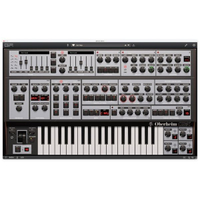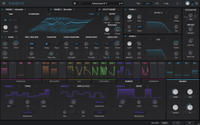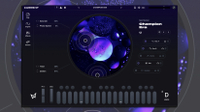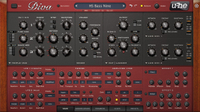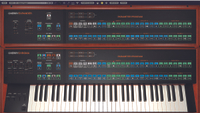Here's 5 of the best software synth deals you should jump on this Cyber Monday
Our top picks span the likes of GForce Software, Cherry Audio and Arturia.

As the former editor of Computer Music, I've reviewed and worked with more software synths than most. Across our pages we covered the whole spectrum, from meticulous models of hardware classics, to modern innovations in virtual synthesis design.
In this year's Cyber Monday plugin deals, some of our favourites from the last few years are available for their lowest price ever, spanning the likes of Cherry Audio, U-he, Arturia, GForce Software and many more. But, with so many vying for your attention - and so many synths promising the universe - we thought it best to steer your wallet towards those that we genuinely think will improve your tracks - or, those are just too much fun to experiment with to not mention.
While we've already told you why we think Arturia's V Collection X and ROLI's dexterous Equator2 deserve consideration, the following five are probably the synths we'd really tell you to sink your cash into. In all honesty, any one of the below will be a purchase you won't regret making.
1. GForce Oberheim OB-X

GForce Software is a true heavyweight in the soft-synth world, and for a short period of time, their recently released OB-X - which exactingly models an Oberheim polysynth - allows you the cheapest route to working with the legendary tones of a classic Oberheim. Being the world's first officially-endorsed emulation of the classic 80s powerhouse, the OB-X features 16 voices across four modes (Poly, Mono, Legato and Unison) with enhanced control only possible via software, including advanced modulation possibilities and an augmented version of the original's classic oscillator section. It's a dream to work with, and sound ultra-legit.
We said: "The OB-X is the next best thing to a ‘real’ OB, with a GUI to match and a sound which is almighty, dominating and impressive."
Grab this officially endorsed software version of an Oberheim classic, complete with extended polyphony of up to 16 voices, detune and vintage controls for vintage character and expanded software-only functionality
2. Arturia Pigments 5

Whilst GForce's Oberheim OB-X is a perfect example of a perfect hardware emulation, Arturia's Pigments 5 is kind of what we're thinking of when we referenced 'modern innovations in synthesis design' in our intro. Pigments 5 is built around two main engines which can subsequently access four different types of synthesis (Analog, Wavetable, Sample and Harmonic). The UI is a top-down view of how your sounds are routed, and morphs to suit whichever synthesis type you select. You can also process any external audio via the Utility section if things weren't creative enough. Its sounds can be massive or delicate, depending on how you approach and modifty the many, many parameters. It's a sound-designer's dream, basically.
We said: "Pigments is still the synth that crams in the power and flexibility, but presents it to you in a very easy-to-use way. One of the best sound design tools around."
This sound design-angled synth is a modern soft synth classic, presenting multiple different methods for processing sounds, spanning wavetable, granular and harmonic synthesis types alongside traditional analogue routing
3. Minimal Audio Current
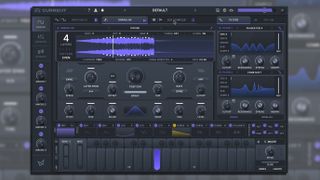
Another newcomer to the virtual synth world has wowed many with its breadth of sonics on offer, as well as its 21st century-aligned (and gorgeously simple) X/Y interface, Minimal Audio's Current is a new favourite of ours for quickly building bold, striking sonics, particularly of an EDM flavour. Built on 5 synthesis engines, Current is fuelled by The Stream - pumping samples, wavetables, presets and sounds directly into the instrument. It's mega-fun, trust us.
We said: "The engines, modulation and effects alone make it a great sound design tool, and while the existing sounds seem to be geared more for the masses, there’s plenty to get your teeth into if a more experimental vibe is required. That’s where the superb effects enter their own. When it comes down to it, Current is a magnificent synth."
Current offers a fluid, modern way of achieving instantly captivating sonics. Built on 5 parallel sound engines and a flexible modulation section. Current is fuelled by The Stream, which allows users to import samples, wavetables, presets and sounds directly into the instrument.
4. U-he Diva
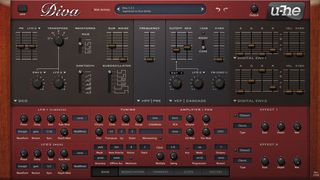
While the other items in this list have been reviewed recently, it'd be remiss of us to not point out U-he's Diva - still one of our very favourite soft-synths - is also having a big price drop over the next few days. This 2012 classic was an early pioneer of classic synth architecture modelling, and in our money it still stands tall. Diva's sounds can get big. Merging 5 oscillator models with 5 filter types cribbed from some bona-fide legends of the synth universe, Diva might look a little dated, but its sounds will tear through your mixes like a bolt of lighting.
We said: "Diva was initially pitched as a "learning synth", but the sound quality makes it much more than that. Diva's slick, accessible interface and truly mind-blowing sound make it a fine addition to your synth rack."
Still a go-to fixture of our soft-synth arsenal, Diva remains a vast repository of big analogue-modelled sounds, with its ultra-fun modulation section and mighty fine arpeggiator meaning that it'll probably still be in this list in ten years time!
5. Cherry Audo Rhodes Chroma
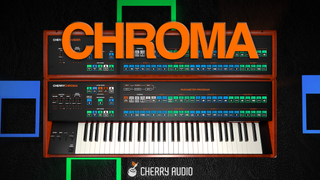
Bringing things back up-to-date, sort of, Cherry Audio's sublime model of a true vintage classic wowed us by both its accuracy, and its uniqueness. Based on an early synth legend (read our review for the full story…) Cherry Audio's Chroma is essentially a subtractive synth armed with up to 16 voices, with two oscillators per voice, though an included expander doubles that oscillator count to four per voice. All the voices and oscillators can be assigned to a number of routings, but for the most part, the expander and main unit operate as separate voices, meaning that you can get very creative. Its UI might seem daunting at first, but once you get to grips with how Chroma operates (particularly when you start blending waveshapes) you can start building patches that can sound vast and sumptuous.
We said: "A true classic, reproduced to a very high standard. Its versatility in use, coupled with huge levels of programmability, make Chroma something of a must-have"
Cherry Audio knocked it out of the park with this detailed recreation of a synth pioneer. Explore its retro-architecture and before long you'll be cooking up massive patches and detailed sonic character via its dense modulation and waveshape-blending
Get the MusicRadar Newsletter
Want all the hottest music and gear news, reviews, deals, features and more, direct to your inbox? Sign up here.



I'm the Music-Making Editor of MusicRadar, and I am keen to explore the stories that affect all music-makers - whether they're just starting or are at an advanced level. I write, commission and edit content around the wider world of music creation, as well as penning deep-dives into the essentials of production, genre and theory. As the former editor of Computer Music, I aim to bring the same knowledge and experience that underpinned that magazine to the editorial I write, but I'm very eager to engage with new and emerging writers to cover the topics that resonate with them. My career has included editing MusicTech magazine and website, consulting on SEO/editorial practice and writing about music-making and listening for titles such as NME, Classic Pop, Audio Media International, Guitar.com and Uncut. When I'm not writing about music, I'm making it. I release tracks under the name ALP.
